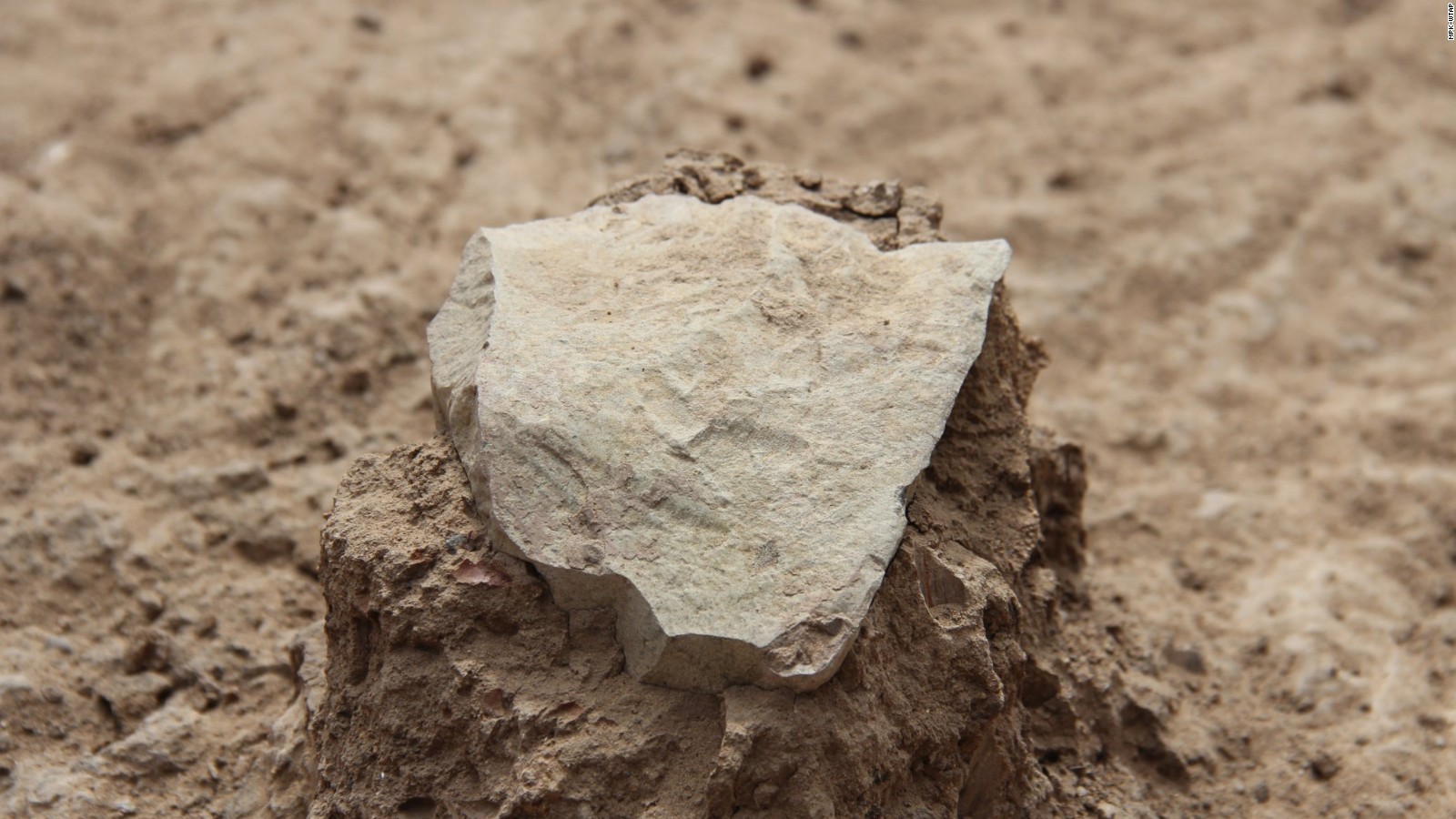Scientists: Oldest stone tools found in Kenya

Tool unearthed at excavation site.
Story highlights
- Scientists have found the oldest stone tools in the world dated 3.3 million years old
- That's 700,000 years older than previously thought
- The discovery suggests there are older human fossils to be discovered
(CNN)Archaeologists have made a discovery that may mean our school textbooks have to be rewritten.
According to a paper published by the science journal Nature,
the oldest stone tools made by our human ancestors have been discovered
in northwestern Kenya and they date back 3.3 million years -- about
700,000 years before the oldest tools previously unearthed.
"We
have extended the archaeological record by almost a third," Jason
Lewis, the co-author of the paper, told CNN. "That's like finding cell
phones back in the early 1900s."
Previous evidence found in Ethiopia suggested that the oldest stone tools of the genus Homo, to which modern-day humans belong, dated back 2.6 million years.
The
newly-unearthed stone artifacts predate, by a great margin, the oldest
humans, who are believed to have emerged 2.8 million years ago.
This has two implications:
Either ancient human ancestors like the ape-like creature "Lucy"
-- which lived around the same time as the artifacts -- made the tools,
meaning humans are not the only ones able to craft sophisticated tools,
or humans appeared earlier than currently thought, and their fossils
are still waiting to be found.
The
tools discovered include flakes -- sharp, edgy fragments that could be
used for cutting -- along with the cores from which flakes were struck,
and anvils, used to hold the cores when flakes were chipped off.
"The stone tools are larger than what we are used to see from 2.6
million years ago, and are also lighter in color, which is striking to
me, because normally stones found on the surface are darker," said Sonia
Harmand, the Stony Brook University archaeologist and author of the
paper.
It is not clear how these tools were used and who exactly was using them.
"This
is a very difficult question," said Harmand. "We are still in the
process of looking at these stone tools and trying to get the
information we need."


No comments:
Post a Comment